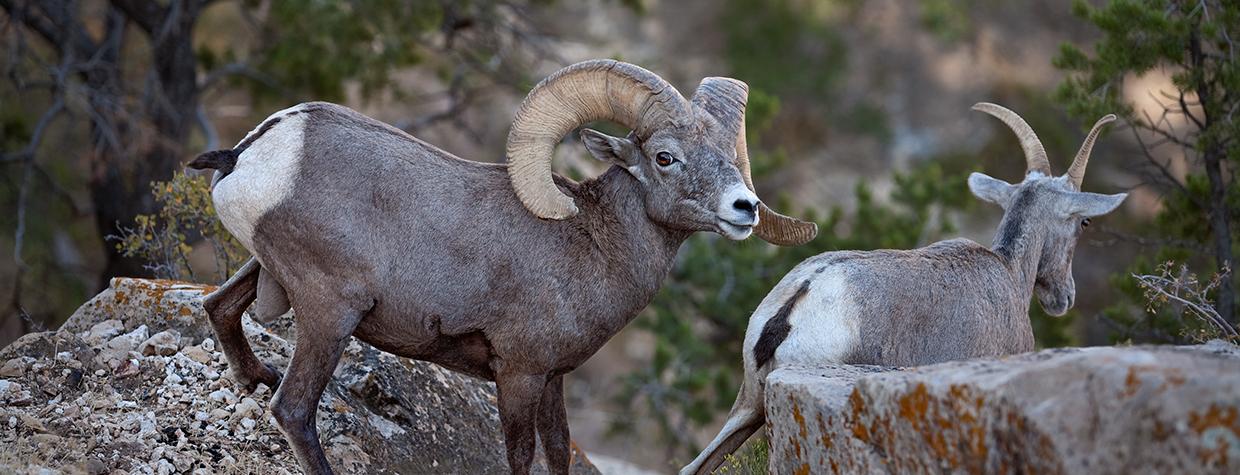It’s before dawn when we arrive at the trailhead, so we check our packs as the sky pulls itself from the vacuum of night and warms into a violet haze.
Within minutes, and as we begin our South Rim-to-South Rim adventure, it happens — the sky blooms with the incomparable palette of a Grand Canyon sunrise.
It is early April on the South Kaibab Trail, and I am thinking about the things people keep. Memories. Souvenirs of the places we’ve been, hope for the places we’ve yet to get to, and a longing for the places we never will. So, when the ram ambles up the trail, I am neither surprised nor in awe. I am too busy wondering what half-dream memories I will pull from this day.
I am reverent, though.
The bighorn sheep wasn’t the biggest I’ve ever seen. No, that one was among the herd off the south side of State Route 260 just east of Greer. He was backlit, his horns illuminated, dense and curled. They looked like massive, unraveling snail shells, throwbacks to some ancient creature with an ancient system of defense.
The Grand Canyon ram was smaller, young and curious. In the video I’ve watched dozens of times since that spring day, he moves slowly toward me and my friends Meredith and Ryan, darts into the garden of rock that lines the trail, then up and out of sight. The entire encounter lasts only seconds.
I will tuck the gift away to remember decades from now.
According to the National Park Service, the horns of sheep and bison are different from the antlers of deer, elk and other ungulates, in that antlers are shed and regrown every year. Horns are made from a layer of bone and topped by a hard outer layer formed by the same substance — keratin — of which human nails are composed. They grow with the animal. So, like tree rings, the size of an animal’s horns can be indicative of an animal’s age.
The bighorns in Grand Canyon National Park are a native population, meaning no sheep have been introduced. Sadly, their numbers are affected by a number of variables, such as hunting and grazing outside park boundaries and the effects of human influence within the park (think: the ingestion of food wrappers and interference from river runners and hikers).
It’s taken me 40 years to get here, below the rim. I was born in the Grand Canyon State, moved all about, came back, covered thousands of miles of back roads and backpacking routes. Not once, though, have I hiked these trails. Not once have I cast my shadow over the Colorado River as it cuts its serrated course through these primeval rocks.
Today, we walk upon them.
Our entire trip takes about eight hours, from the top of the South Kaibab to Phantom Ranch, then up the Bright Angel Trail. We’ve been told there is no water at the 3 Mile or 1.5 Mile resthouses, so we refill amid the redbud trees at Indian Garden. I have a sense that there are far more hidden stories in this Canyon than those we’ve heard bounce off its walls all day.
The last 5 miles grind, and the stretch of day and the weight and beauty of the experience crash down upon our bones. More and more people head down the trail as I wind my way to the top, but somehow, there’s so much silence.
I realize that I am hopeful not just to reach the rim again, but to gather the souvenirs from this day. The space. The silence. The river. The ram.

